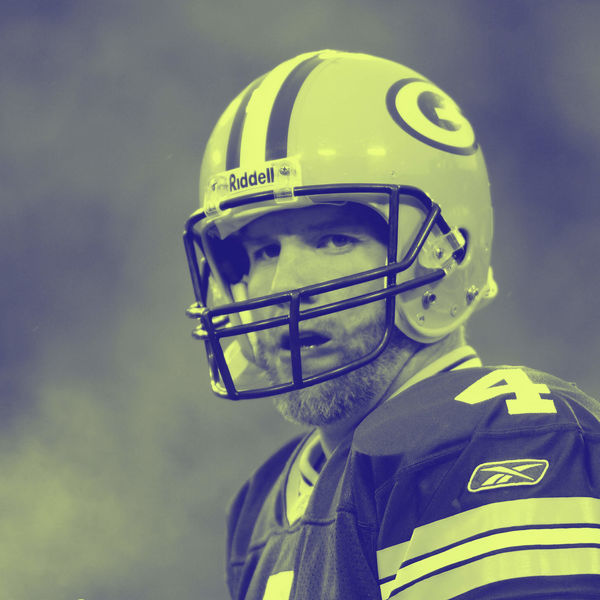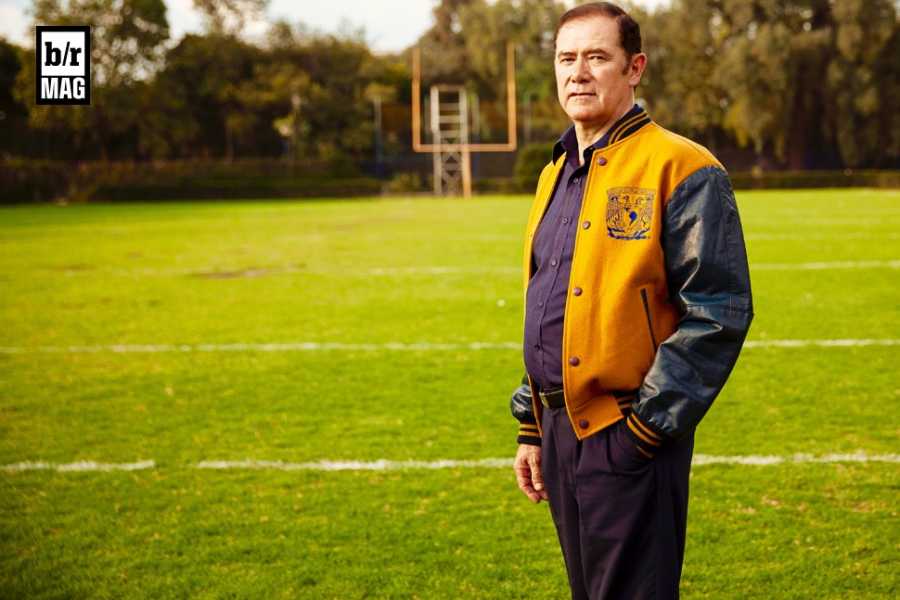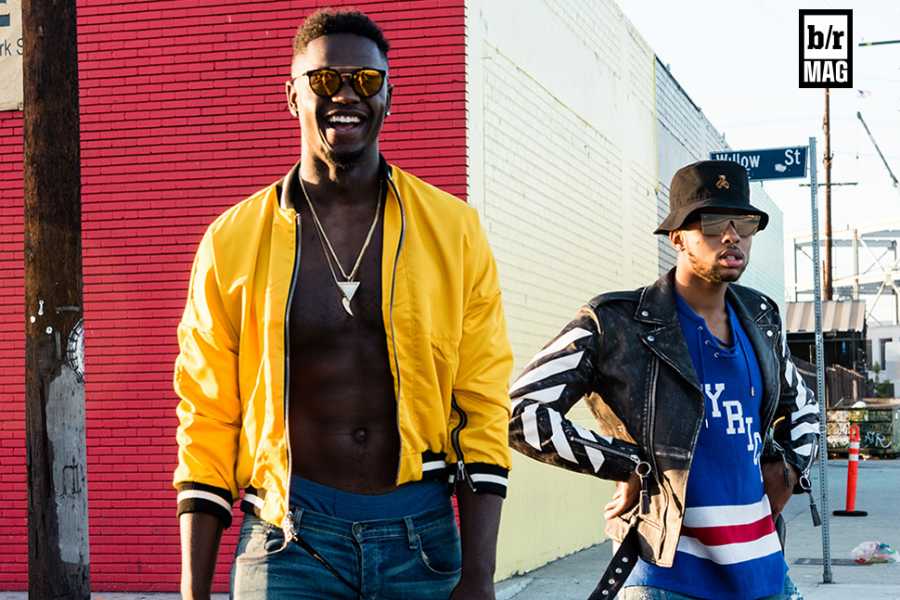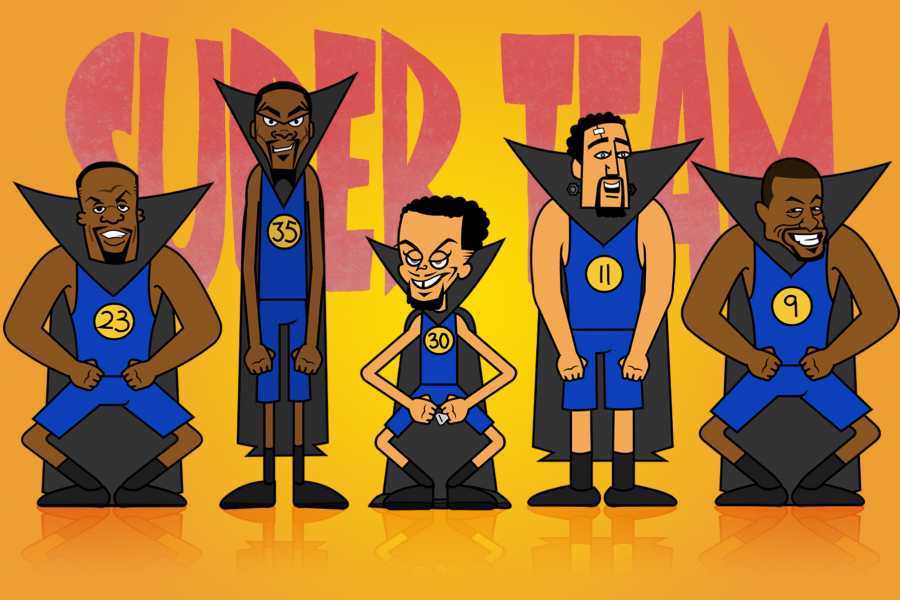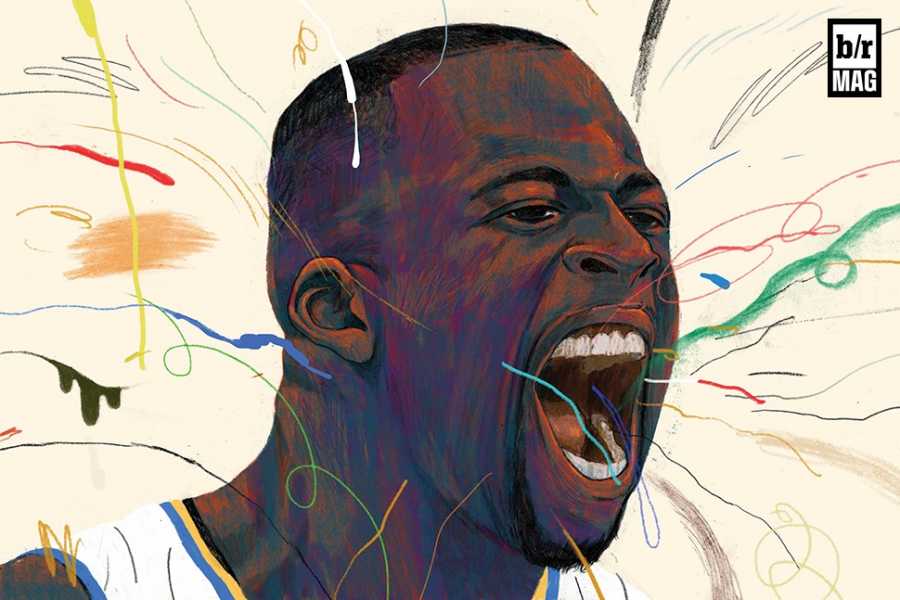Brett Favre looks on prior to Super Bowl 50 between the Denver Broncos and Carolina Panthers at Levi's Stadium on February 7, 2016, in Santa Clara, California. (Getty Images)
As a greener man Favre loved bounding from one corner of the room to the other, absorbing the flavors, the lingo. Now, fed up and no longer fully engaged, he chose to change with the coaching staff, in their private dressing area to the side. If he drove to the stadium, Favre parked his Ford F-150 in its own private area, and walked in through a back entrance. When Mike Sherman came to Green Bay before the 2000 season, he envisioned working with Favre in the way Bill Walsh and Joe Montana did in San Francisco—a two-headed offensive football juggernaut. But Sherman lacked Walsh’s strength, and over the years he granted Favre increased liberties. If he wanted to miss a practice? OK. Arrive a bit late for a meeting? Fine. Dress away from the teammates? No biggie. This was hardly new terrain for veteran superstars, but Favre was thought to be different.
Perhaps that’s why, when the Packers hired Ted Thompson as the new general manager that January, more than a few Green Bay executives hoped he would start by encouraging Favre to fade into the Mississippi sunset. A former linebacker with the Houston Oilers in the late-1970s and early 80s, Thompson was a humorless man who had spent five seasons as Seattle’s vice president of operations and, before that, six years in Green Bay heading the pro personnel department. Bob Harlan, the team president, initially promoted Sherman to coach and general manager when Ron Wolf left before the 2001 season. “I wanted cohesion for the franchise,” he said. Harlan was, however, never comfortable with such a consolidation of power, and grew increasingly concerned as Sherman blew high draft picks on busts and floundered in drawing free agents. “The burden changed him as a person,” Harlan said. “He became very quiet, he ignored everybody. He would get on the airplane on Saturdays, put on earphones and not talk to anybody. I made a mistake in giving Mike both jobs. It was too much.” So now Thompson was the GM, Sherman back to serving merely as the head coach.
With the (admittedly large) exception of Thompson’s presence, the leadup to the 2005 Draft was similar to a year earlier. Once again Green Bay wanted a quarterback, but knew the two best available players (Utah’s Alex Smith and California’s Aaron Rodgers) would be distant memories once their slot (24th overall) arrived. Much of the attention turned to Charlie Frye, the Akron quarterback who gained national respect (and more than a few Favre comparisons) by starting nine games with a broken thumb on his throwing hand in 2002. Were he still available at No. 24, the Packers were likely to pounce.
The Draft unfolded unpredictably. Smith and Rodgers were widely considered a coin flip. One quarterback would go first, the other shortly thereafter. Both were big, strong, accurate, smart. Smith was quiet. Rodgers, confident. When the day arrived and the Utah junior was selected No. 1 overall, nobody was particularly shocked. ESPN’s Ron Jaworski said the 49ers made the right call; that “the delta” between Smith and Rodgers was “significant.”

Aaron Rodgers passed for 275 yards as the California Golden Bears defeated the Oregon Ducks 28-27 at Memorial Stadium on November 6, 2004, in Berkeley, California. (Getty Images)
But what followed—strange. Three running backs, three wide receivers and three cornerbacks rounded out the Top 10. Sitting behind the stage in the green room at the Javits Center in New York City, Rodgers waited … waited … waited. He wore a blue pinstriped suit, a maroon tie and a closely cropped haircut. At times the ESPN cameras caught his face drooping to the ground, almost as if he were about to weep. While waiting for San Diego to use its 12th pick, ESPN’s Suzy Kolber sat alongside Rodgers and asked, “A couple of weeks ago, Aaron, you were the clear-cut No. 1. What’s changed over that time?” Forcing a smile, Rodgers said, “I wish I could tell you.” He was embarrassed, and the grin failed to mask depression. “You start questioning everything,” he later said. “From where you worked out to how hard you worked.” The Dolphins had lacked a standout starting quarterback since Dan Marino’s retirement in 1999—and they took a running back, Auburn’s Ronnie Brown, second. Tampa Bay’s starting quarterback was the mediocre Brian Griese—and they selected a halfback, Auburn’s Cadillac Williams, fifth. Arizona’s starting quarterback was the forgettable Josh McCown—and they selected a cornerback, Miami’s Antrel Rolle, eighth. One by one, franchises thought to need a quarterback let Rodgers sit and wait. In hindsight, much of it had to do with a cold-footed reaction to negative scouting reports. Shortly before the draft, for example, a scout for an NFC team told Pete Dougherty of the Green Bay Press-Gazette that he would pass on Rodgers. “I just think Aaron's the product of being on a good team,” the scout said. “He's got a good running back who takes a lot of the pressure off him, they throw a lot of screens and dump balls. I see Utah winning because of Alex Smith, he's the one that does it. I don't think Cal was winning because of Aaron Rodgers.” Jaworski repeatedly cited Rodgers’ “blemishes,” and said he did not project well to the NFL. There was also the matter of finances. First-round draft choices are expensive, and first-round quarterbacks tend to be very expensive. Of the 21 teams picking ahead of Green Bay,12 were about to take a quarterback salary cap hit in excess of $2.4 million for 2005.
So Aaron Rodgers dropped.
And dropped.
And dropped.
A decade earlier Tom Rossley, the Packers offensive coordinator, had been the head coach at Southern Methodist. His quarterback coach was George Cortez, who now held the same position at Cal. One day, weeks before the draft, Cortez called Rossley and begged him to come and watch Rodgers throw. “You need to see this guy,” he said. Rossley hadn’t planned on scouting Rodgers, because he was certain he wouldn’t be available for the Packers. But, out of friendship, he made the trip. “He worked out for an hour, and every ball he threw was caught,” Rossley said. “I watched [former Ravens quarterback] Kyle Boller’s Cal workout, and he got on his knees at the 50 and threw one over the goalpost. It was amazing—and Aaron’s workout eclipsed that. I told Ted, 'This guy Rodgers is special.'”
When the Oakland Raiders grabbed a Nebraska cornerback named Fabian Washington with the 23rd selection, Thompson knew immediately who the Packers would take. “About three or four days before the draft,” he said, “I was convinced that the best thing to do, if he got to us, was draft Aaron Rodgers.” Finally, approximately five hours after Smith went No. 1, Rodgers’ phone rang. It was Thompson—“How do you feel about coming to Green Bay?”
“I don't think you can ever replace a legend.”
Before rising to shake Tagliabue’s hand, Rodgers was grabbed by Merton Hanks, a former Pro Bowl cornerback now employed by the NFL. Back in 1991 he lasted into the fifth round before being picked by San Francisco. “I played my whole career with a chip on my shoulder,” Hanks whispered. “You should do the same.”
Indeed.
“It wasn’t the easiest day,” Rodgers said. “But I’m just so excited about being able to go to a team that wants me, and to learn from the greatest quarterback of our day right now. And I couldn’t be happier with what next year, and the years to come, will look like. Being a Packer.”
Later that day, Rodgers spoke via conference call with the Green Bay media. He handled himself perfectly, especially when asked about the incumbent.
“You know,” he said, “I don’t think you can ever replace a legend.”
✦ ✦ ✦
A couple of weeks after the draft, Dylan Tomlinson of Gannett Wisconsin Newspapers was sent 90 miles northeast of Sacramento to Chico, California, to visit with Aaron Rodgers for a profile.
Tomlinson had been on the Packer beat since 2003, and Brett Favre was far from his favorite player. He found the quarterback to be phony, arrogant, thin-skinned. He hated how the team’s notoriously protective PR staff served as his personal brick wall, and laughed as rival journalists left offerings at the shrine of Brett. Through the years Tomlinson had heard dozens of rumors about Favre’s infidelity and drunkenness, yet felt constrained by the bonds of local Packer love to write anything. “People felt loyal to Brett, because in Green Bay he was a football God,” Tomlinson said. “But, just being honest, I couldn’t stand him.”
Rodgers, on the other hand, immediately impressed the scribe. Though but 21, he was clearly more intelligent and probing than Favre. Rodgers scored a 1310 on the SATs and graduated Pleasant Valley High with an A- average.
Because he played quarterback for an off-the-map school in an off-the-map corner of California, Rodgers—who threw for 4,421 yards in two seasons as a prep starter—received no Division I scholarship offers. The University of Illinois invited him for a visit, but merely extended a walk-on opportunity. He enrolled at Butte College in nearby Oroville, California, starred on the football field (“No one on the team understood why he was there,” said Shaun Bodiford, a Butte wide receiver) and finished with two spectacular years at Cal. After the Golden Bears lost to Texas Tech in the Holiday Bowl, Rodgers declared himself eligible for the NFL Draft.

Excerpted from GUNSLINGER: The Remarkable, Improbable, Iconic Life of Brett Favre by Jeff Pearlman. Copyright © 2016 by Jeff Pearlman. Used by permission of Houghton Mifflin Harcourt. All rights reserved.
Tomlinson loved Rodgers’ openness. He was laid-back and casual and happy to show the reporter around his home. At one point during their day together, Tomlinson asked Rodgers what people had told him about Brett Favre.
“Not much,” Rodgers said. “I really don’t know what to expect.”
Tomlinson felt pangs of sympathy for the kid. “Honestly,” the writer said, “I think he’ll torment the hell out of you. Knowing how insecure he is, I think he’ll give you a lot of shit.”
Rodgers and Favre finally met on June 2, when the Packers came to town for a seven-practice organized team activity camp. Now merely a head coach (and a disgruntled one at that), Sherman allowed Favre to skip the workouts, but that didn’t mean he would not attend. In fact, that morning Favre was alone, sitting in the team cafeteria and reading a newspaper, when Rodgers saw him in person for the first time. The new quarterback approached the old quarterback and uttered what will forever go down as the worst introductory line in the history of professional sports.
“Good morning, grandpa!”
Silence.
Rodgers surely recognized the mistake as soon as the words emerged from his lips. But there was no taking it back. “Brett couldn’t believe that,” said Craig Nall, the backup quarterback. “It was like, ‘Grandpa? Who the hell are you?’”
When asked by reporters about meeting the legend, Rodgers failed to mention the foible. At the time, some in the media tried selling the story of the superstar assisting the newbie. In truth, it was reminiscent of 1951 spring training with the New York Yankees, when a 19-year-old rookie named Mickey Mantle tried to ingratiate himself to the 36-year-old icon, Joe DiMaggio, only to be rebuffed. “My contract doesn’t say I have to get Aaron Rodgers ready to play,” Favre told ESPN. “Now hopefully he watches me and gets something from that.”
From that first day, Favre did nothing to help Rodgers and much to hurt and ridicule him. With Doug Pederson now retired, Nall served as Favre’s primary sidekick, and the two southern boys talked about Rodgers like two bullies mocking a math club nerd. Not that the newcomer made it particularly difficult. “Very cocky, very arrogant,” said Nall. “That’s how he came off. Like a rookie who knew everything.”
“Somebody must have told Aaron he was brought in to replace Brett, because that’s how he acted,” said Najeh Davenport, the veteran running back. “Maybe his agent or someone convinced him he was important, but he walked around like he was the next best thing.”
Many of the Packers participated in a summer charity softball game in nearby Appleton. In his first at bat, Rodgers clubbed a home run and skipped and hopped around the bases. “He was jumping on the heels of the guy in front of him,” said Ben Steele, a Packer tight end. “You could tell the guys were not happy. They expected him to be shy and quiet and not try to outshine Brett Favre, the legend. It bothered me. It bothered a lot of us.”
“My contract doesn’t say I have to get Aaron Rodgers ready to play.”
Sean McHugh, a Packers tight end, said Rodgers was a nice kid with, “California swag.” Which wasn’t the same as Mississippi or Green Bay swag. During that opening camp, then training camp two months later, Rodgers liked to brag about the 35 he scored on the Wonderlic, a test used by NFL teams to assess the aptitude of prospective employees. One day in a quarterbacks meeting he said, “Brett, what did you get on it?”
“I have no idea,” he replied.
“I do,” Rodgers said. “I looked it up. You got a 22.”
When the meeting concluded, Rodgers exited the room first, followed by Darrell Bevell, the quarterbacks coach, then Favre and Nall. “Fucking Wonderlic score,” Favre mumbled. “Do you believe that shit? I run circles around his ass.”
Rodgers made it a point to sit in the front row of team meetings, and raise his hand to answer every question from the coaches. He was smart and studious, and it all went over like a bowl of maggot-coated Fruit Loops. Eventually, Driver, the veteran receiver and Favre’s close friend, pulled the youngster aside and said, bluntly, “Aaron, we get it. You’re smart. Now shut the fuck up.”
Rodgers listened to Driver—for all of four seconds. During drills, he refused to let a play end sans resolution. Were he, for example, flushed from the pocket, a coach might blow the whistle for a re-start. Rodgers, though, kept moving, kept running, kept looking. “He was super competitive, and he would not let the defense win,” said Ruvell Martin, a rookie wide receiver from Saginaw Valley State. “He didn’t care that it was just the scout team. He wanted to win whether it was polite or not.” Oftentimes, after completing a pass against the defense in practice, Rodgers let loose an inane celebratory dance, where he would slide his right foot forward while pretending to roll a dice with his right hand. After enough gazes of disbelief from Favre and Co., Bevell pulled the kid aside and said, “You’ve been on the football field before. Act like it.”
By virtue of his status as the heir apparent, Favre would not have taken to Rodgers had he been a kid from Southern Miss with a wad of tobacco in his cheek. But Rodgers was confident and cool and somewhat tone deaf. Favre offered little (well, no) advice, but the kid wasn’t exactly seeking out the information. He seemed to believe he was not only ready for the NFL, but ready to lead the Packers. Before long an unspoken-yet-clear divide formed in Packer camp. The veterans viewed Rodgers as an unwelcomed intruder (“I was friends with Craig Nall and [quarterback] J.T. O’Sullivan,” said Steele. “And they were like, ‘Why’d we draft this guy? He’s not even good.’ Which was laughable—he was real good.”), but the younger players felt his sense of urgency, and responded. Favre was of a different era. Rodgers was now. Favre had “his” guys. Rodgers just threw the ball. When he arrived in camp, Chris Samp, a rookie free agent wide receiver from Winona State, couldn’t wait to work with his hero, ol’ No. 4. “He was such a disappointment to me,” said Samp. “If it was his turn in the quarterback rotation and he saw me at wide receiver, he’d wave Rodgers in instead of throwing to me. Just because I was no one. It wasn’t just me. He had favorites.
“I looked up to him. But if I had to run a 12-yard route, he’d wing the ball even before I got to the cut. Then he’d throw his hands up. I’d come back and say, ‘What am I doing wrong?’ He’d say, ‘Forget it. I’m not looking at you.’ He was a jerk. To me. To Aaron.”
Rodgers’ presence clearly irked and threatened Favre, and the relationship (or lack thereof) dominated much of training camp. Rob Demovsky, who covered the team for ESPN, asked Rodgers whether he had hung out with Favre. “Seriously,” Rodgers said, “I don’t even have his number.”
✦ ✦ ✦
